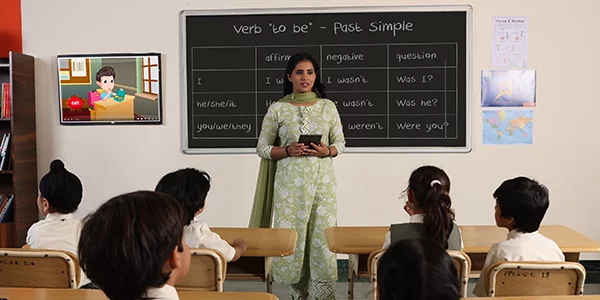Discover the Best Primary Science Tuition Singapore for Your Learning Journey
Discover the Best Primary Science Tuition Singapore for Your Learning Journey
Blog Article
Checking Out the Different Teaching Methods in Primary Science Education Today
The landscape of primary science education and learning is advancing, with numerous mentor techniques acquiring importance in contemporary class. Inquiry-based learning, hands-on experiments, and the combination of modern technology are redefining exactly how educators involve young minds. Additionally, collaborative strategies and distinguished instruction are being used to satisfy the diverse demands of pupils, boosting both involvement and understanding. As we check out these techniques, inquiries arise regarding their effectiveness and the effects for future academic practices. What might these changes in strategy mean for the future generation of learners?
Inquiry-Based Understanding
Inquiry-Based Knowing (IBL) is an instructional method that urges students to check out scientific concepts through wondering about, investigation, and hands-on testing. This approach emphasizes the function of pupils as active individuals in their learning, advertising vital thinking and analytic abilities. By engaging with real-world questions, pupils end up being interested and inspired, which enhances their understanding of scientific principles.
In IBL, teachers work as facilitators, directing trainees as they browse their questions instead than delivering information directly. This student-centered method enables for distinction, accommodating various learning speeds and styles. Students establish abilities in creating theories, developing experiments, and evaluating data, which are vital for clinical proficiency.
Furthermore, IBL promotes partnership among trainees, urging them to share searchings for and concepts. This cumulative questions advertises social skills and a sense of neighborhood within the classroom. The procedure of inquiry encourages durability, as students find out to accept failure as a stepping stone towards understanding.
Hands-On Experiments
Hands-on experiments are an essential part of effective scientific research education and learning, complementing the concepts of inquiry-based understanding. These experiments enable students to involve straight with clinical concepts, fostering a much deeper understanding through experiential learning. By manipulating products and observing outcomes, young learners can grasp abstract concepts in tangible methods.
Such activities promote essential reasoning and problem-solving abilities, as pupils assume end results, conduct experiments, and examine results. This procedure urges them to ask concerns, fine-tune their understanding, and develop a clinical attitude. Moreover, hands-on experiments can be tailored to varied learning designs, ensuring that all pupils have the opportunity to engage meaningfully with the web content.
In addition, hands-on experiments usually motivate cooperation amongst peers, advertising teamwork and communication abilities. Functioning in teams enables students to share concepts, go over searchings for, and pick up from each other, which boosts their general academic experience.
Integrating hands-on experiments into the key scientific research educational program not only enriches the finding out setting but additionally grows a long-lasting rate of interest in science. By actively participating in their education, trainees are more most likely to establish an enthusiasm for scientific query that extends past the class.

Technology Assimilation
Incorporating modern technology right into key science education has become increasingly necessary in cultivating pupil involvement and boosting finding out outcomes. The use of electronic devices, such as interactive simulations, digital labs, and academic software, provides pupils with opportunities to check out scientific concepts in cutting-edge means. These resources facilitate a much deeper understanding of complicated topics by permitting students to envision and control variables that would be not practical in a traditional classroom setup.
In addition, innovation combination encourages personalized finding out experiences. Students can proceed at their very own rate, reviewing tough ideas via multimedia resources, which cater to various knowing styles. This flexibility not only sustains individual growth but additionally cultivates a sense of autonomy in students.
Furthermore, modern technology acts as a bridge to real-world scientific research, connecting students with existing study and professional payments. Access to on-line databases and clinical journals broadens trainees' perspectives on scientific inquiry and cultivates critical believing abilities.
Collaborative Learning
Joint learning plays a crucial duty in primary scientific research education by promoting synergy and communication abilities amongst students. This technique urges learners to collaborate, share knowledge, and engage in analytical, which boosts their understanding of scientific concepts. By participating in group tasks, students learn to verbalize their concepts, pay attention to diverse point of views, and work out options, all of which are crucial skills in both real-world and academic contexts.

Study indicates that collective knowing can lead to raised motivation and engagement in science topics, as students discover satisfaction in common experiences (primary science tuition Singapore). Additionally, this technique prepares pupils for future collective endeavors, furnishing them with the abilities necessary for efficient synergy in college and specialist environments. Eventually, welcoming collaborative discovering in key science education can significantly enhance the understanding experience and advertise a deeper understanding of scientific inquiry
Set Apart Instruction

Separated direction can show up in various ways, such as differing the content, processes, or products of understanding. As an example, teachers may use tiered tasks that offer differing levels of complexity, allowing pupils to operate at their particular readiness levels. Additionally, adaptable grouping techniques can help with collaboration amongst trainees try this site with different capacities, promoting peer knowing.
Assessment plays an important role in this approach, as it educates direction and helps instructors comprehend each pupil's special requirements. Formative analyses, such as monitorings and quizzes, can direct educators in changing their approaches to improve finding out results. primary science tuition Singapore. Ultimately, by applying separated instruction in primary scientific research education, instructors can cultivate a much more efficient and fair learning atmosphere, encouraging all trainees to reach their full possibility in comprehending clinical sensations
Conclusion
In recap, the diverse training methods in primary science education and learning, consisting of inquiry-based knowing, hands-on experiments, innovation combination, joint understanding, and differentiated direction, jointly add to a more efficient discovering setting. These methods advertise crucial thinking, analytical abilities, and a much deeper comprehension of clinical ideas. By applying these strategies, instructors can produce engaging and encouraging classrooms that address the varied needs of pupils, ultimately fostering a lifelong interest in scientific research and boosting academic accomplishment.
Inquiry-Based Discovering (IBL) is an instructional method that motivates students to check out clinical ideas go to this website through questioning, examination, and hands-on testing.Collective knowing plays an important role in key scientific research education by fostering synergy and interaction skills amongst pupils.Study indicates that collaborative learning can lead to raised inspiration and involvement in scientific research topics, as students locate satisfaction in common experiences.In promoting an inclusive understanding atmosphere, distinguished instruction arises as an essential strategy to fit the diverse needs and abilities of pupils in primary scientific research education. Inevitably, by applying distinguished guideline in main scientific research education, instructors can cultivate an extra equitable and efficient knowing setting, empowering all pupils to reach their full capacity in comprehending scientific sensations.
Report this page